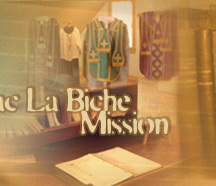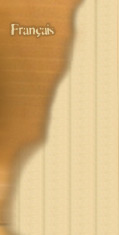Agriculture | Fishing | Gardening & Greenhouse
GARDENING & GREENHOUSE
Notre-Dame des Victories
The Mission had several gardens on site. Many were used for growing vegetables, but Bishop Faraud had his own gardens where he grew medicinal herbs, flowers, and tobacco.
***
Very soon after arriving at the new Mission site in 1855,
Fathers Tissot and Maisonneuve made great efforts to make the mission self-sufficient.
This proved a very difficult task in the early years as the priests lacked
most tools and a sufficient number of draught animals. In the spring of 1856,
both Tissot and Maisonneuve were hard at work trying to clear a small field for a garden. This involved felling trees, uprooting
stumps, and breaking the ground with few implements other than an axe and
a hoe. Despite these problems they did manage to clear a few acres and plant
barley, kohlrabi and potatoes. The garden was probably located near the few
building on the site. In 1861 the garden yielded 360 bushels of potatoes from
the 18 bushels planted. In 1864 a yield of 200 bushels of potatoes, 20 bushels
of barley and 4 bushels of peas was reported on inventory.
trying to clear a small field for a garden. This involved felling trees, uprooting
stumps, and breaking the ground with few implements other than an axe and
a hoe. Despite these problems they did manage to clear a few acres and plant
barley, kohlrabi and potatoes. The garden was probably located near the few
building on the site. In 1861 the garden yielded 360 bushels of potatoes from
the 18 bushels planted. In 1864 a yield of 200 bushels of potatoes, 20 bushels
of barley and 4 bushels of peas was reported on inventory.
When Father Faroud came, (in 1869) he was a very active
gardener; he did this as a hobby to try to get some sunshine and fresh air.
As he did every year he began planting the seed indoors. He planted flowers,
particularly Stock, and "everlastings", tobacco, and leeks. The
tobacco shoots were covered with straw to keep them from freezing and when
replanted outdoors surrounded by ashes to keep the bugs from "chewing
his tobacco." The  tobacco
turned out well and he made cigars and twists of tobacco during the fall.
Later he forged a special knife for cutting the cured tobacco. He was very
proud of his tobacco as visitors remarked on the quality of it. He had some
innovative ideas, one of which was the terraces he had built over the lake,
"in imitation of the Hanging Gardens of Babylon", where he planted
radishes and lettuce. The ample access to water made for tender vegetables
all summer long. He also built a small privillion (a gazebo), "a green
room for growing hops" which the sisters used as a leavening agent.
tobacco
turned out well and he made cigars and twists of tobacco during the fall.
Later he forged a special knife for cutting the cured tobacco. He was very
proud of his tobacco as visitors remarked on the quality of it. He had some
innovative ideas, one of which was the terraces he had built over the lake,
"in imitation of the Hanging Gardens of Babylon", where he planted
radishes and lettuce. The ample access to water made for tender vegetables
all summer long. He also built a small privillion (a gazebo), "a green
room for growing hops" which the sisters used as a leavening agent.
The sisters often complained about having to do the ardous tasks, such as harvesting with a sickle, and their journal makes it seen like they did all the work with the help of the school girls. However it is likely that there was a division of labour according to the need. As well as the hard work, they had to contend with early winters. In 1877 the ground was frozen by October and covered by snow and the potatoes were not yet gathered. Never had September and October months been so difficult as this. There was a constant fear that the potatoes would all be frozen into the ground. They finished gathering by the tenth, but the potatoes were wet and muddy and many had frozen. They were put in the root cellar, but they all had to be taken out again, to be sorted and dried, one by one. It was the fifth of November before the job was done. Although it had been an early winter, it turned out to be a mild one.
 It
is noted that flowers were important for decorating the altar as well as for
other decoration. November 30 was the anniversary of Faraud's consecration
as a bishop and a celebration was planned for him. Faraud was presented with
a bishop's velvet skullcap and a magnificent giroflee (cloves) all in bloom
which he had admired in the sisters' garden as well as six bouquets of "everlastings"
from his own garden.
It
is noted that flowers were important for decorating the altar as well as for
other decoration. November 30 was the anniversary of Faraud's consecration
as a bishop and a celebration was planned for him. Faraud was presented with
a bishop's velvet skullcap and a magnificent giroflee (cloves) all in bloom
which he had admired in the sisters' garden as well as six bouquets of "everlastings"
from his own garden.
One winter was so mild that the old chapel was decorated in flowers for New Years’ Day, unfortunately the day of celebration arrived with some cold weather and all but the rosebushes froze.
In spite of the hard work, lack of equipment and
work animals, the early winters, late springs, bugs and worms, the garden
was always planted and it provided enough for the mission people more. Even
at the present time, (2002) on the mission grounds Mr. E.O Kudslien, member
of the Heritage Society plants a garden every spring.
© 2003 Société
culturelle Mamowapik and the Lac La Biche Mission Historical
Society (All Rights Reserved)






